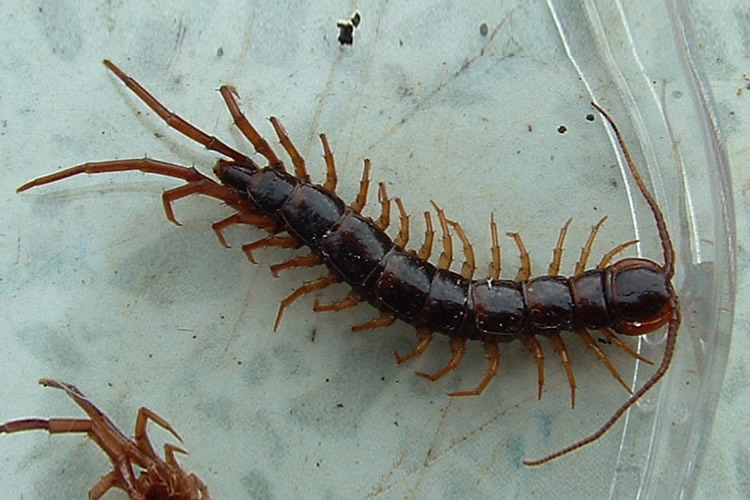Lithobius pilicornis Newport, 1844
Synonyms
Lithobius (Lithobius) pilicornis Newport, 1844
Status:
- GB IUCN status: Least Concern
- GB rarity status: Nationally Scarce
ID Difficulty
Identification
Lithobius is a difficult genus and at least 17 species are known from Britain and Ireland.
Lithobius pilicornis is one of five large brown Lithobius (to 40 mm or more for this species) with >4 + >4 forcipular teeth and strong projections on tergites 11 and 13 (though feeble on tergite 9 in this species). It is not possible to reliably identify in the field and it is easily over-looked as the ubiquitous L. forficatus, but the diagnostic spines on the coxae of the last legs (15 VaC and 15 VmC) readily distinguish L. pilicornis from all other British and Irish Lithobius.
More information to allow accurate identification is given in the published identification keys by Tony Barber (2008 & 2009).
Distribution
Lithobius pilicornis species is locally frequent in south-west England (where it can replace L. forficatus), but there are also widely scattered records from urban sites across England and south Wales. There is a single record from Ireland (Cork City).
Habitat
In south-west England and South Wales this centipede can be found in a variety of habitats, including woodland. Elsewhere it is predominantly synanthropic and found in gardens, churchyards and waste ground even in towns and cities. It is usually found under stones or dead wood.
This account is based on the 'Centipede Atlas' (Barber, 2022).
Links
ChiloBase 2.0 - World Catalogue of Centipedes: https://chilobase.biologia.unipd.it/searches/result_species/2366








